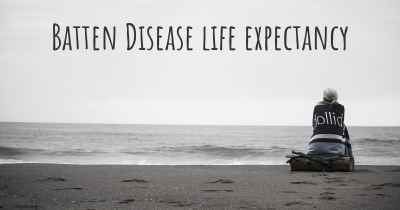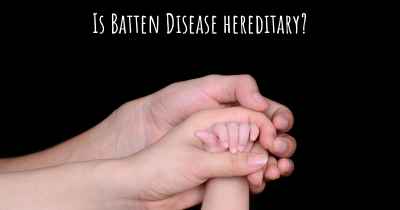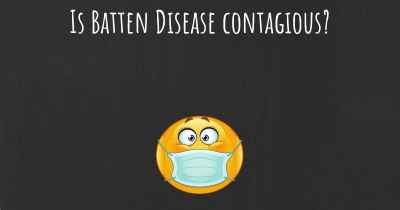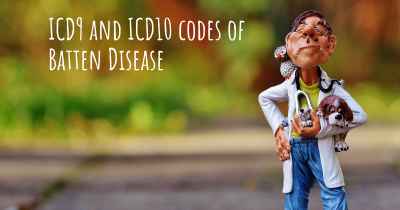Which are the causes of Batten Disease?
See some of the causes of Batten Disease according to people who have experience in Batten Disease
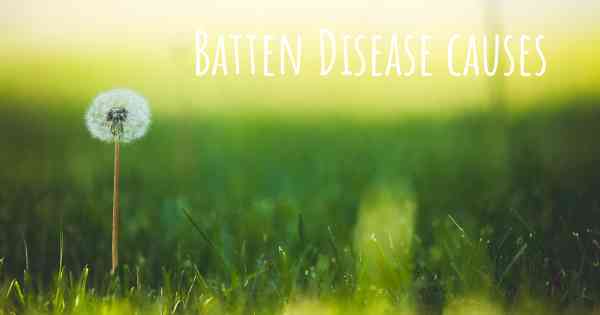
Batten Disease, also known as Neuronal Ceroid Lipofuscinosis (NCL), is a rare and devastating genetic disorder that primarily affects the nervous system. It is characterized by the progressive degeneration of nerve cells in the brain and other parts of the body. Batten Disease is caused by mutations in certain genes that are responsible for the production of specific enzymes or proteins necessary for normal cellular function.
1. Genetic Mutations: The primary cause of Batten Disease is genetic mutations that affect the function of certain genes. There are several different types of Batten Disease, each caused by mutations in different genes. The most common forms include CLN1, CLN2, CLN3, CLN5, CLN6, CLN7, and CLN8. These mutations can be inherited from one or both parents, depending on the specific type of Batten Disease.
2. Autosomal Recessive Inheritance: Batten Disease is typically inherited in an autosomal recessive manner. This means that an affected individual must inherit two copies of the mutated gene, one from each parent, to develop the disease. If both parents are carriers of the mutated gene but do not have the disease themselves, each child has a 25% chance of inheriting two copies of the mutated gene and developing Batten Disease.
3. Enzyme or Protein Deficiencies: The genetic mutations in Batten Disease lead to deficiencies in specific enzymes or proteins that are crucial for normal cellular function. For example, in CLN1 disease, mutations in the PPT1 gene result in a deficiency of the enzyme palmitoyl-protein thioesterase 1. This enzyme is responsible for breaking down certain proteins in the lysosomes, the cellular compartments involved in waste disposal. Without the proper functioning of these enzymes or proteins, toxic substances accumulate within the cells, leading to their progressive degeneration.
4. Lysosomal Dysfunction: Batten Disease is classified as a lysosomal storage disorder because the genetic mutations disrupt the normal functioning of lysosomes. Lysosomes are responsible for breaking down and recycling various molecules within the cell. In Batten Disease, the accumulation of undigested substances, such as lipids and proteins, within the lysosomes leads to their dysfunction and subsequent cell death.
5. Neuronal Degeneration: The progressive degeneration of nerve cells is a hallmark feature of Batten Disease. As the disease progresses, the affected neurons in the brain and other parts of the body become damaged and eventually die. This neuronal degeneration results in the characteristic symptoms of Batten Disease, including cognitive decline, seizures, loss of motor skills, and vision impairment.
6. Oxidative Stress and Inflammation: Studies suggest that oxidative stress and inflammation play a role in the pathogenesis of Batten Disease. Oxidative stress occurs when there is an imbalance between the production of reactive oxygen species (ROS) and the body's ability to detoxify them. This oxidative damage can further contribute to the degeneration of neurons. Additionally, chronic inflammation in the brain can exacerbate the progression of the disease.
7. Other Factors: While genetic mutations are the primary cause of Batten Disease, other factors may influence the severity and progression of the disease. These factors can include environmental influences, epigenetic modifications, and individual variations in gene expression. However, further research is needed to fully understand the interplay between these factors and the development of Batten Disease.
In conclusion, Batten Disease is primarily caused by genetic mutations that result in deficiencies of specific enzymes or proteins necessary for normal cellular function. The disease is inherited in an autosomal recessive manner, and the progressive degeneration of nerve cells in the brain and other parts of the body leads to the characteristic symptoms of Batten Disease. Oxidative stress, inflammation, and other factors may also contribute to the disease's progression. Understanding the underlying causes of Batten Disease is crucial for developing effective treatments and interventions to improve the lives of affected individuals.
